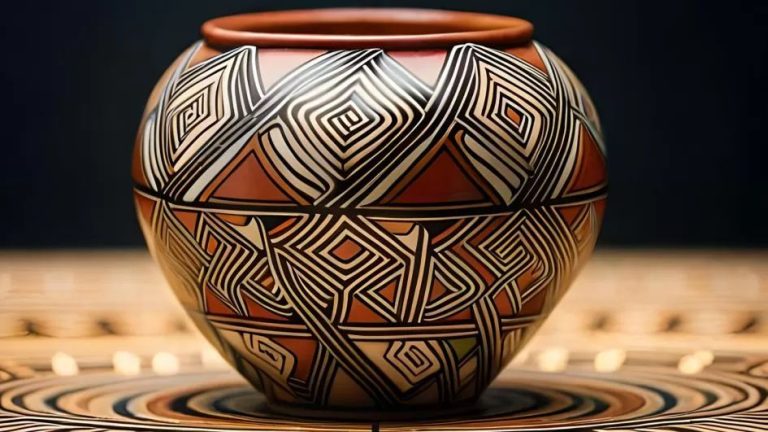Can You Build A House Out Of Clay?
Clay is a natural material composed primarily of fine-grained minerals like feldspar and quartz. When mixed with water, clay becomes plastic and moldable, allowing it to be shaped into blocks, bricks, and other forms for construction. As one of the oldest building materials known to humankind, clay has been used to construct homes and structures for thousands of years across the world.
Compared to other common building materials like wood, stone, and concrete, clay has some unique properties that make it suitable for construction. Clay is abundant, renewable, and low cost since it can be dug directly from the earth. It also has good thermal and acoustic insulation properties. When dried or fired, clay becomes very strong and durable. Clay structures can potentially last for centuries, as evidenced by many ancient clay buildings still standing today.
With its versatility, natural abundance, and energy efficiency, clay remains a relevant building material in the modern world. Although not as widely used as in ancient times, clay is still valued for its sustainability and aesthetic qualities in contemporary architecture.
Pros of Clay Construction
One of the biggest benefits of building with clay is that it’s a completely natural and sustainable material. Clay is abundant in most parts of the world and can be harvested responsibly without depleting resources or harming the environment. Unlike concrete or steel which require high amounts of energy for production, clay construction has a very low carbon footprint.
Clay is also highly energy efficient as it provides natural insulation, helping regulate indoor temperatures. The thermal mass of clay walls and floors absorbs heat during the day and releases it slowly at night. This can significantly reduce the need for heating and cooling systems.
In addition, clay is non-toxic, fire resistant, and has excellent moisture regulation properties. It creates a healthy indoor environment by absorbing humidity and preventing mold growth. Overall, clay is an eco-friendly, green material that is ideal for sustainable and natural building techniques.
Cons of Clay Construction
While clay construction has its benefits, it also has some drawbacks compared to modern building materials. One key disadvantage is that clay structures tend to be less durable and weather resistant than buildings made from concrete, steel or brick. Over time, clay can erode, crack and deteriorate when exposed to heavy rains, winds and other elements. This means clay buildings typically require more ongoing maintenance to remain structurally sound.
Compared to modern masonry like fired bricks, clay walls are more prone to damage from moisture and require protective coatings like plaster to prevent erosion. Unstabilized clay is also somewhat fragile and can be dented or cracked more easily than concrete or stone. Reinforcement with straw and careful maintenance is necessary to fortify clay against damage. Overall, clay’s lack of durability compared to contemporary building materials is a key drawback to assess when considering clay construction.
Clay Construction Techniques
Several techniques use clay as the primary building material for house construction. Some of the main methods include:
Adobe
Adobe construction uses sun-dried bricks made of clay, sand, and water mixed together. The adobe bricks are stacked similar to regular bricks and bonded with an adobe mortar made of clay, sand, and water. Modern adobe bricks are often stabilized with a binder such as cement or asphalt emulsion for added durability.
Cob
Cob construction involves building monolithic walls using lumps of clay, sand, straw, and water. The cob mixture is applied by hand to build up successive layers until the wall is complete. Cob provides thermal mass to help regulate interior temperatures.
Rammed Earth
Rammed earth uses a stiff mixture of clay, aggregates like gravel, and a small amount of stabilizer. It is compacted into formwork to create dense walls. Rammed earth provides thermal mass benefits similar to cob and adobe.
Structural Considerations
When building with clay, structural support is an important consideration. Clay’s compressive strength allows it to support vertical loads in walls, but reinforcement is often needed to provide tensile strength and prevent cracking.
Clay walls must be wide enough to support the roof load. Interior partition walls may be narrower, but exterior load-bearing walls need an adequate thickness. Using clay blocks or bricks rather than packed earth improves compression strength.
Horizontal bamboo or timber reinforcements may be embedded in the walls to provide stability. Vertical wood posts can also be incorporated if needed. An interior or exterior plaster coating protects walls from erosion and enhances strength.
Foundations must be strong to prevent settling and cracking in clay walls. A stone rubble trench foundation anchored with concrete works well. Steel reinforcement bars driven into the ground beneath corners and junctions can further strengthen the foundation.
With proper structural design, clay can safely be used as a load-bearing building material. But reinforcement is needed for horizontal stability and to compensate for clay’s low tensile strength.
Climate Considerations
When building a house out of clay, it’s important to consider the climate and weather conditions of the location. Clay can be an excellent natural building material, but it also has some vulnerabilities that need to be addressed.
One of the biggest climate factors is precipitation. When exposed to heavy rains, unfired clay can become waterlogged and erode away. In very wet climates, it’s important to have generous roof overhangs to protect clay walls from rainfall. Wide eaves, porches, and verandas help shield the clay surfaces.
It’s also crucial to properly seal and plaster clay surfaces to prevent water intrusion and damage from dampness. Natural plasters like lime render, cement stucco, or earthen plasters work well to waterproof and protect clay construction. Avoid using clay plasters as they can retain moisture.
In locations with frequent freezing and thawing in winter, clay’s ability to expand and contract becomes problematic. Adding stabilizers like cement, asphalt emulsion, or lime to the clay mixture helps make it more durable and resistant to erosion from freeze-thaw cycles.
Clay houses perform excellently in hot, arid climates because of clay’s ability to regulate interior temperatures and humidity. The thermal mass properties of clay walls moderate daily temperature swings, keeping interiors comfortable.
With smart material choices and design strategies tailored to local conditions, clay can be an sustainable and energy-efficient building material in many different climate zones.
Modern Clay Architecture
Clay may seem like an ancient building material, but it is actually experiencing a resurgence in modern architecture. With its sustainability, affordability, and natural aesthetic, clay is an appealing choice for many contemporary builders.
Here are some notable examples of modern clay architecture:
The Clay Tower in Austria is a striking 11-story residential building made entirely of clay bricks, wood, and glass. Completed in 2021, the tower demonstrates clay’s potential for multi-story construction.
The Eastgate Building in Zimbabwe uses clay construction and traditionalpassive cooling techniques to achieve energy-efficient operation in a hot climate. The building has been called “one of the most remarkable eco-friendly structures in the world.”
The Pixel Building in Australia features a futuristic design with intricate patterns of protruding clay bricks. It pushes the boundaries of what’s possible with clay as a decorative facade material.
The Clayarch Gimhae Museum in South Korea combines rammed earth walls with traditional Korean clay roof tiles for a building that bridges past and present. The museum blends seamlessly into its natural surroundings.
These projects demonstrate that clay should not be overlooked as a building material. In the hands of creative and knowledgeable architects, clay can produce contemporary buildings that are attractive, high-performing, and environmentally responsible.
Cost Analysis
When comparing the costs of building a house out of clay versus more conventional building materials like wood, concrete and steel, there are several factors to consider:
Clay
– Clay itself is very affordable and often available locally, reducing transportation costs.
– No specialized tools or forms are needed for construction, lowering equipment costs.
– Clay structures require less maintenance over time compared to other materials.
– Energy costs can be lower because of clay’s natural insulation properties.
– Labor costs may be higher due to the specialized skills needed for clay construction.
Conventional Materials
– Wood, concrete and steel have become very optimized for mainstream construction, keeping costs relatively low.
– These industrialized materials require less specialized labor to work with.
– Forms and equipment to work with these materials are readily available.
– However, these materials often require more maintenance, repairs and weatherproofing over the lifetime of the structure.
Overall, clay can be a very cost-effective natural building material. However, conventional materials benefit from economies of scale and being highly standardized in the construction industry.
Building Codes
When building a house out of clay, it’s important to be aware of local building codes and regulations. Most municipalities require permits for new construction, which involves submitting detailed plans for review. Building inspectors will want to ensure any clay construction meets standards for strength, durability, fire resistance, insulation, moisture protection, and other factors.
Building codes provide important safeguards for home construction. Since clay houses are less common in many areas, extra communication with local building officials may be required. Some tips when navigating permits and regulations for clay construction:
- Research local building codes thoroughly and consult with an architect or engineer familiar with earthen construction.
- Be prepared to submit alternate construction methods or materials if clay does not meet specific code requirements.
- Have structural tests performed to validate the strength and seismic durability of the particular clay mix and construction techniques.
- Provide detailed plans showing clay proportions, building layers, reinforcement methods, and other specifics.
- Investigate whether any state or national standards can be referenced to support clay construction methods.
- Consider getting involved with advocacy efforts to update local building codes to acknowledge sustainable earthen building techniques.
With proper planning, it’s often possible to obtain permits for clay houses that meet the intent of building codes and provide assurance of safety.
Conclusion
In summary, building a house entirely out of clay is possible but comes with some challenges. The natural properties of clay make it suitable for construction in many ways – it’s durable, fireproof, insect-resistant, and has good thermal mass. However, clay’s susceptibility to water damage means extra precautions must be taken. Building a clay house also requires specific techniques, climate considerations, and finding the right type of clay soil.
While clay houses are uncommon in modern construction, they can be a cost-effective and sustainable option for the right location and environment. With careful planning and design considerations, clay remains a feasible material for people interested in natural building. However, clay construction may not be ideal everywhere due to climate restrictions and building code requirements in some areas. Overall, building a functional home entirely from clay is possible, but also requires weighing the pros and cons for each specific situation.



